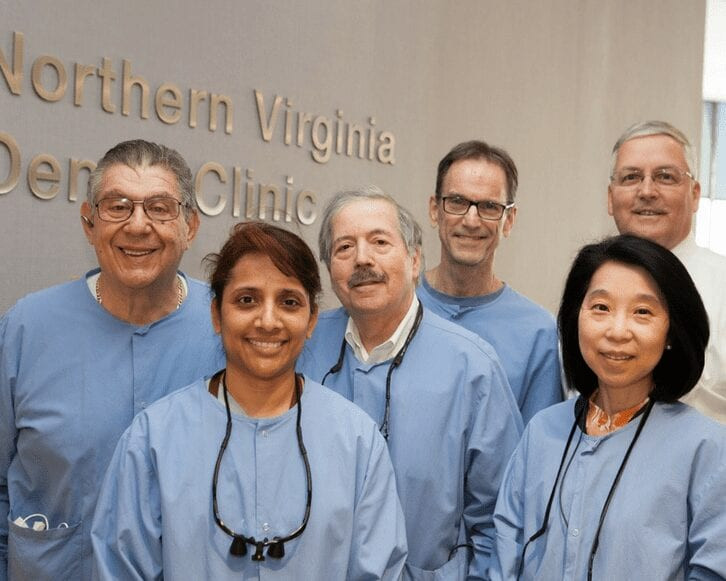Five Ways the Northern Virginia Dental Clinic Promotes Health Equity
By: Northern Virginia Health FoundationThe Northern Virginia Dental Clinic (NVDC) has served our region faithfully for 25 years. But the clinic’s dedication to oral health access goes beyond cleanings and fillings. Here are five ways the Northern Virginia Dental Clinic works to promote health equity and expand opportunity for all.
1. NVDC partners with Fairfax County to provide care to homeless residents.
NVDC and the Fairfax County Health Department joined forces in 2011 to make dental care more accessible for homeless people living in the county. Getting basic dental care is challenging for the homeless, often because they lack money or insurance to cover the cost, or they may have never seen a dentist.
Every week, case workers from the health department bring three to four homeless residents to the clinic for treatments. Providers work with the patients to assess their needs and develop a full treatment plan. Over the years, they have logged more than 1,600 visits for homeless patients.
The county covers the usual appointment fees, allowing patients the opportunity to visit the clinic up to six times for a range of services from cleanings, extractions, or fillings to dentures or other prosthetic pieces.
2. NVDC trains dental students from around the country.
NVDC’s diverse client base is a big reason why dental schools from New York, Kentucky, North Carolina, Maryland, Virginia and Washington, D.C., send their students to train there each year.
Many dental schools require students to work in community-based settings before they graduate. It’s a way to expose future dental professionals to new procedures and to learn how to deliver care that’s culturally competent and respectful of social, linguistic and cultural differences.
Students do training rotations at the clinic anywhere from one to six months. During that time, they’re exposed to a range of experiences, sometimes for the first time such as treating a client with Medicaid or conversing with a patient who immigrated from another country. Sometimes the new experience is a procedure the student doesn’t regularly perform in their school setting, like dentures, which can require multiple appointments and are highly dependent upon patient appointment compliance.
Research shows that these types of experiences can motivate dental students to provide care for traditionally underserved populations when they enter practice.
Schools that partner with NVDC: Virginia Commonwealth University, Howard University, University of Louisville, University of Maryland, Baltimore County, University of North Carolina at Chapel Hill, University at Buffalo, and Northern Virginia Community College.
3. NVDC offers in-house training programs to promote volunteer dentistry.
NVDC hosts continuing education courses for practicing dentists. But instead of charging a monetary fee, they ask participants to volunteer at one of NVDC’s two locations for either a full day or two half days. For the clinic, it’s a way to expand access to care and promote volunteerism while also helping dentists improve their skills.
Volunteerism is a critical element of NVDC’s strategy for meeting their patient’s needs. NVDC has 23 staff members, a decent size for a safety-net, but not nearly enough to meet the demand across the region. That’s why the clinic regularly relies on a corps of more than 170 volunteer dentists and hygienists to serve thousands of residents every year from Arlington, Fairfax and Loudon counties and the cities of Alexandria, Fairfax and Falls Church.
4. NVDC uses remote interpreters to break down language barriers.
More than half of NVDC’s clients speak English as a second language. And, for a while, that resulted in communication challenges for providers and patients.
But in 2016, the clinic installed an over-the-phone translation service to help reduce these language barriers. Now, when someone needs an interpreter, the client and provider dial into the service together. Usually within 15 seconds, interpreters join their conversation and translate both sides in real time. The service, called Language Line, gives the clinic access to trained linguists in more than 240 languages 24 hours a day, 7 days a week.
Language Line helps the clinic better adjust to the needs of the region’s diversifying population. For patients, the service means better communication with their dentist. It also means greater independence for patients who typically bring a second person to translate conversations with their doctor.
5. NVDC opened a second location to better serve the region.
In 1994, NVDC had a four-chair clinic in Bailey’s Crossroads, equipped with donated dental units. Today, they have two state-of-the-art facilities in Fairfax and Loudoun counties and operate ten dental chairs with patients seen five days a week.
In 1997, NVDC recorded approximately 3,100 patient visits. In 2017, a few years after the second location opened, NVDC nearly quadrupled that number, logging 11,300 visits and performing 25,321 dental procedures worth more than $5 million (based on the average cost of those procedures in the private sector).
Not only did the second location allow NVDC to serve more people, it also provided room to offer more services: from diagnostics and restorative care and cleanings to all types of oral surgery, endodontics, biopsies, periodontics, and emergency care. It also provides full and partial dentures, crowns and night guards.
To learn more about the Northern Virginia Dental Clinic, visit http://www.novadentalclinic.org/

